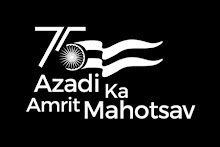

The Nandan Nilekani headed task force set up to work out modalities for direct transfer of subsidy has suggested a cap on consumption of subsidized LPG cylinders for all customers. Indications are that consumers will be charged subsidized rate for eight cylinders a year, though a final decision on the exact number is yet to be taken. The usage pattern of cylinders indicate about 60% of LPG households consuming eight cylinders a year. The government presently provides a subsidy of over Rs 291 on each cylinder of cooking gas. The report suggests identification of beneficiaries using the Unique ID. The final report will be ready by December 2011 after incorporating the experience of trial projects that are to be launched in seven states over the next six months. In the three-phase implementation of the direct transfer of subsidies, beneficiaries will be identified and direct cash transfers will be made in their bank accounts. The task force will supervise the pilot projects and will come out with an “implementable solution” for direct transfer of subsidies in its final report by December. Regarding LPG, the task force discussed three phases. In the first phase, there will be a cap on subsidized cylinders with a robust authentication framework in place. The government will decide later on the number of subsidized LPG cylinders made available to a household. In the second phase of LPG subsidy transfer, which does not depend upon Phase I, direct transfer to customers’ bank account has been recommended. In the third phase, segmentation and targeting of customers and direct transfer to these customers has been recommended. Regarding fertilizer, the task force in the first phase seeks complete identification of the supply chain up to the retailer to bring in transparency. In the second phase, direct transfer of subsidy is recommended to the retailer’s bank account while in the third phase, direct transfer of subsidy is recommend to the farmer’s account. For kerosene, the task force recognizes that wider consultation with state governments is required. Direct transfer of subsidy for kerosene will depend to a large extent on PDS reforms which are being implemented by the states. The task force recommends direct transfer of subsidy through state governments in first phase and direct transfer to the beneficiary’s account in second phase. Finance minister Pranab Mukherjee had constituted the task force in February 2011 under the chairmanship of Nandan Nilekani, chairman, UIDAI. The task force was mandated to submit its interim report by June 2011. Mukherjee said the direct transfer of subsidies on LPG, fertilizer and kerosene will help in curbing pilferage and leakages. A transparency portal will be developed containing details of each customer and their consumption pattern. This will provide the government data on movement of stocks and its usage. The portal will also work as grievance management system where customers can complain and will be equipped to detect fraud and diversion. Beneficiaries will be provided a choice of banks to opt for, along with an interoperable network of business correspondents for convenient access to subsidy funds. The rollout of the government’s financial inclusion plan across India, along with the rollout of Aadhaar, will provide a foundation for the implementation of direct transfer of subsidies.




No comments:
Post a Comment